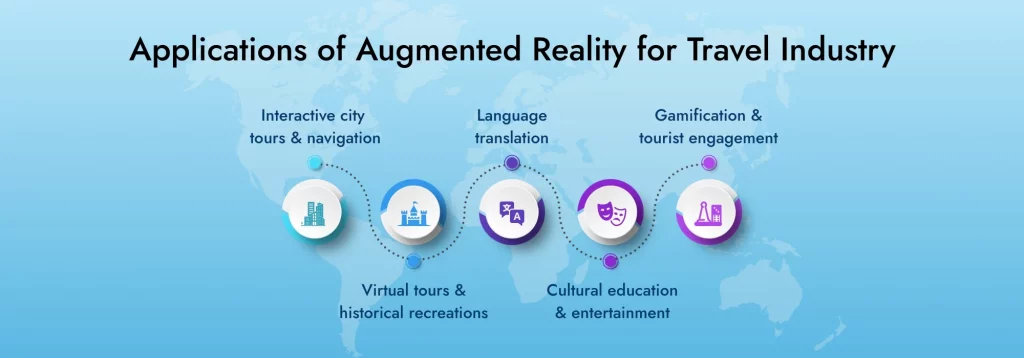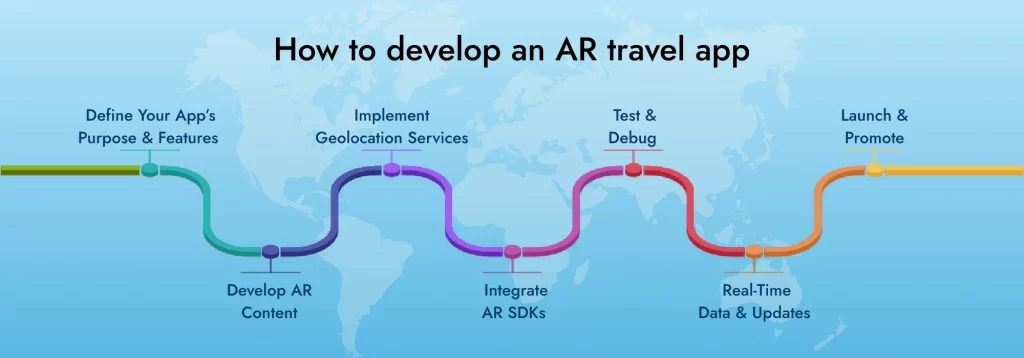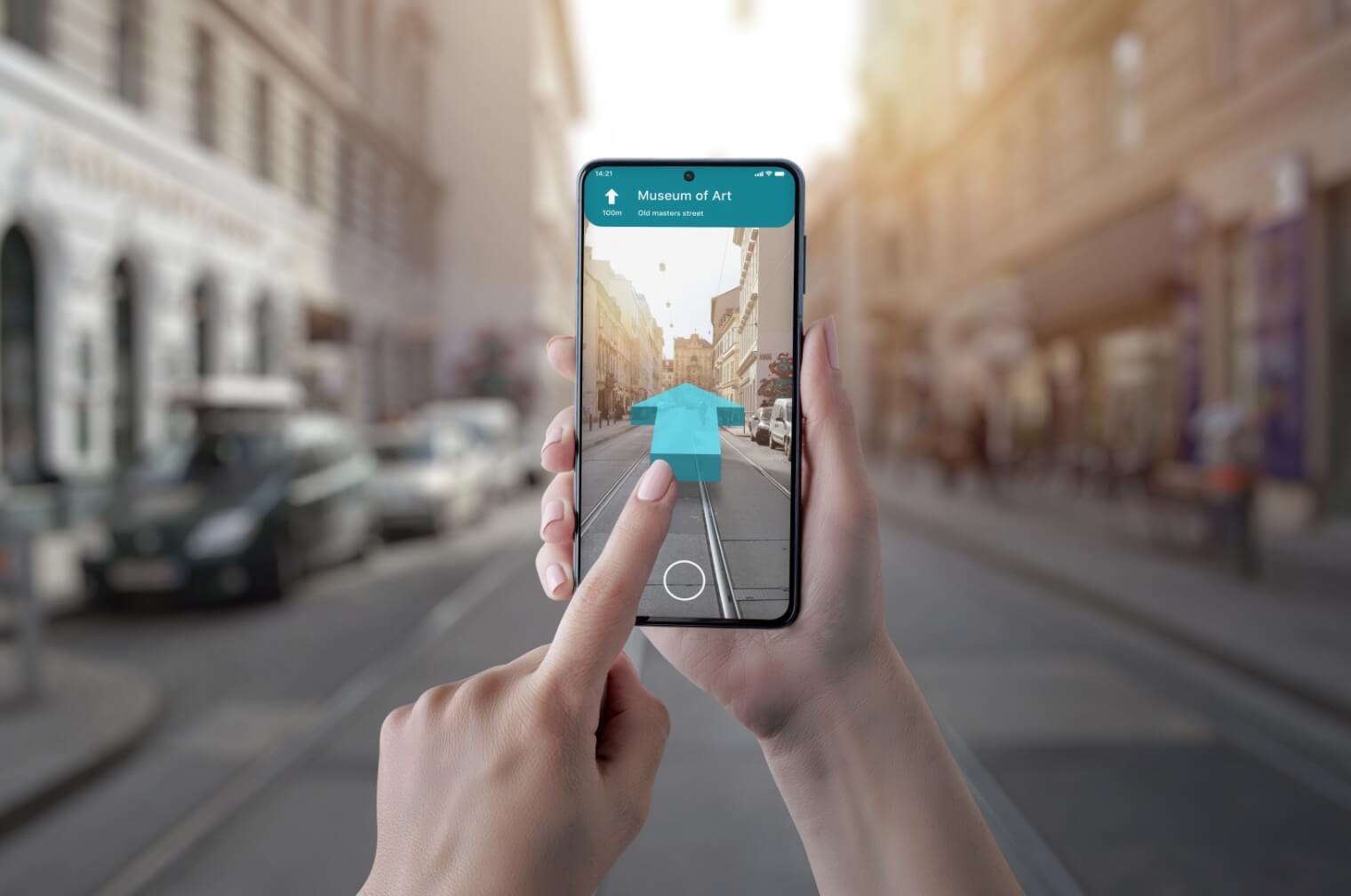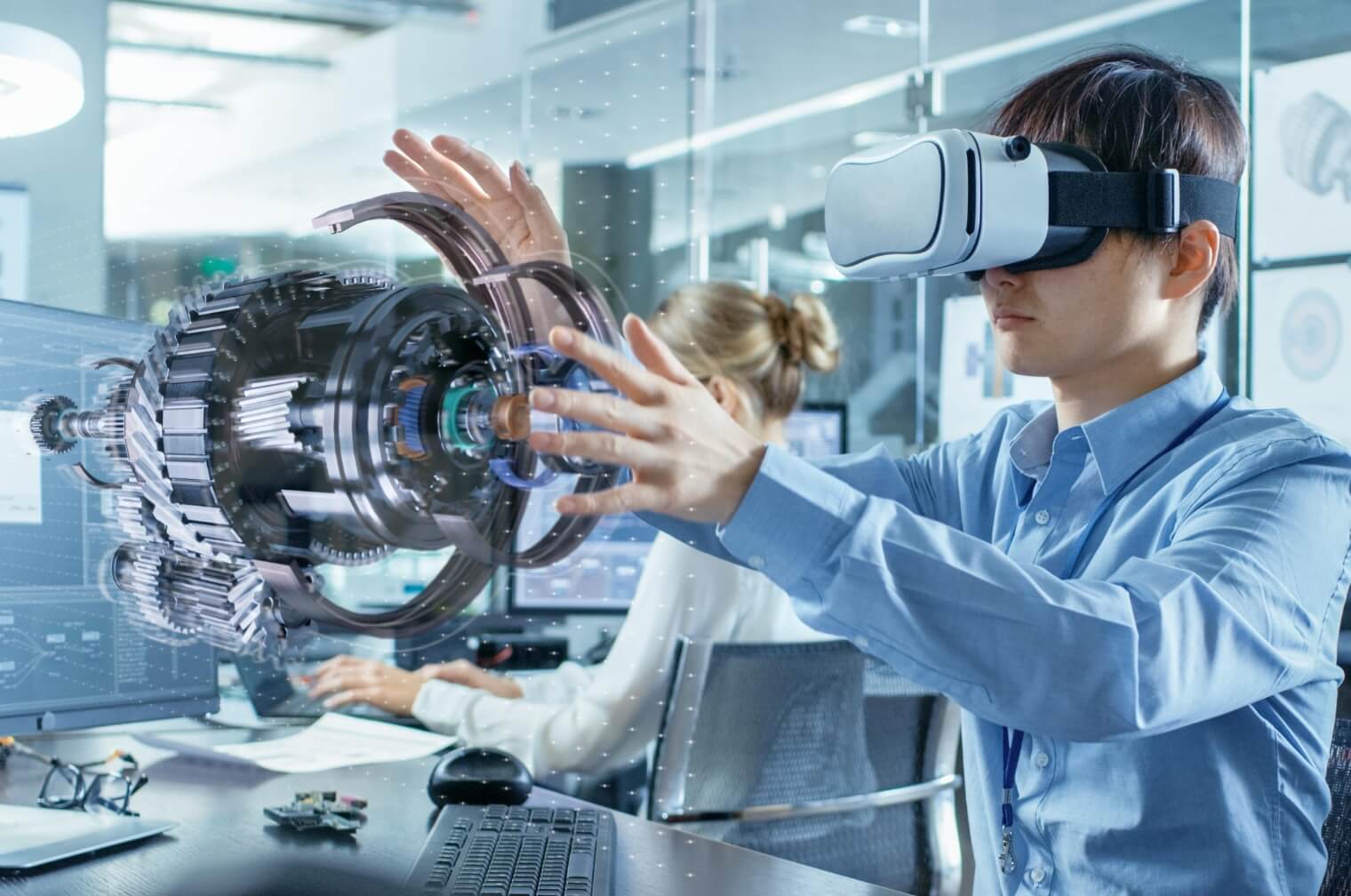Machine Learning and AI for revolution of Tech Companies are changing and streamlining businesses.
The tourism industry is one of the largest and most dynamic economic sectors in the world. Technology has always played an important role in the industry, helping to make travel more convenient, affordable, and accessible. One of the most promising new technologies for travel is augmented reality travel solutions.
Augmented reality for tourists is revolutionizing the way travelers explore new destinations, offering immersive and interactive experiences that go beyond traditional guidebooks. In this blog, we will delve into the world of innovative AR travel solutions, uncovering the endless possibilities they offer to both travelers and businesses.
What is augmented reality (AR) in travel?
Augmented reality in travel industry refers to the integration of digital information into the real-world travel experience. Through the use of AR-enabled devices such as smartphones or smart glasses, travelers can overlay virtual elements onto their physical surroundings, creating an enhanced and immersive travel experience.
Whether it’s exploring historical landmarks, discovering hidden gems, or accessing real-time information, augmented reality travel app development helps elevate the way we interact with destinations.
How AR works in travel applications
AR in travel applications utilizes the capabilities of smartphones, tablets, smart glasses, or headsets to deliver AR experiences. These devices are equipped with cameras, sensors, and GPS, enabling them to detect the user’s location and orientation in real-time.
Here’s how augmented reality travel apps are used:
- Real-time Object Recognition: By analyzing the visual data from the device’s camera, AR technology can identify specific objects and trigger virtual content associated with them.
- Digital Overlays: Once the real-world object is recognized, AR overlays digital information onto the user’s view.
- Interactive Elements: AR allows users to interact with the virtual elements overlaid on their physical environment.
- Real-time Data Integration: AR can integrate real-time data into the user’s view, enriching their travel experience.
Travel businesses can unlock a new dimension of exploration with augmented reality travel solutions, providing real-time information and interactive experiences at their fingertips.
Applications of augmented reality for travel industry
Technology’s constant evolution is reshaping how we experience the world. In the travel industry, augmented reality (AR) is a game-changer, crafting innovative digital experiences that elevate your journeys.

Here are some of the key applications of AR in travel:
- Interactive city tours and navigation: AR apps can be used to help travelers to navigate unfamiliar cities and find their way around.
- Virtual tours and historical recreations: It can be used to transport travelers back in time or to visit places that are inaccessible or no longer exist.
- Language translation: It can be used to translate text and spoken language in real time, helping travelers to communicate with locals and overcome language barriers.
- Cultural education and entertainment: It can be used to create engaging and interactive educational experiences that teach travelers about different cultures and histories.
- Gamification and tourist engagement: It can be used to create fun and interactive games and experiences that can engage travelers and make exploring new places more enjoyable.
These augmented reality tourism trends redefine the way we explore, making travel an immersive and revolutionary experience.
Challenges and limitations of AR navigation in travel
Here is a table that discusses the challenges and limitations of augmented reality navigation in travel, as well as how businesses can overcome these challenges:
| Challenge | Limitation | How to Overcome |
| Hardware Limitations | Augmented reality heavily relies on hardware such as AR glasses or smartphones with advanced capabilities, limiting accessibility for some travelers. | Develop applications that are compatible with a wide range of devices, optimizing performance for various specifications to reach a larger user base. |
| Accuracy and Reliability | AR navigation accuracy can be affected by factors like GPS signal accuracy, environmental interference, and technical limitations, leading to potential misguidance. | Employ multiple sensors and technologies for better location accuracy. Integrate machine learning to improve location and direction accuracy over time. |
| Data Privacy and Security | AR apps collecting location data raise concerns about user privacy and potential security vulnerabilities, impacting user trust and confidence. | Allow users to control data sharing and offer clear opt-in/opt-out choices regarding location sharing. |
| User Experience Complexity | Complex user interfaces and overwhelming AR features can confuse or overwhelm users, hindering the adoption and ease of use for some travelers. | Simplify user interfaces for intuitive navigation. Offer tutorials or onboarding sequences to guide users. Implement user feedback mechanisms to refine and improve the app over time. |
How to develop an AR travel app
AR travel apps are reshaping the way people navigate the world, offering immersive and personalized experiences. If you’re intrigued by the idea of creating your own augmented reality travel app, here is a step-by-step guide for you:

Define your app’s purpose and features
Begin by identifying the primary goal of your augmented reality travel app. What unique value will it bring to users? Clearly defining your app’s purpose is the first and crucial step.
Develop AR content
This step involves creating the AR content that will be superimposed onto the real world. It may include 3D models, geolocation data, historical information, or any content relevant to your app’s purpose.
Implement geolocation services
For location-based AR features, you’ll need to integrate geolocation services. This allows your app to recognize the user’s position and provide context-aware information.
Integrate augmented reality SDKs
Incorporate the chosen AR development tools and SDKs into your app’s architecture. This will enable your app to recognize real-world objects and augment them with digital information.
Test and debug
Thoroughly test your app on various devices to ensure its functionality, stability, and performance. Address any bugs, glitches, or compatibility issues that arise during testing.
Real-time data and updates
Keep your app current by providing real-time data, updates on attractions, events, and travel-related information. Ensure that your content remains fresh and relevant.
Launch and promote
Once your augmented reality travel app is fully developed and thoroughly tested, launch it on the app stores. Promote it across marketing channels.
Are you ready to experience the future of travel with our cutting-edge augmented reality travel solution, seamlessly guiding you through unfamiliar destinations? At ViitorCloud, we specialize in creating immersive augmented reality solutions. Our expert team can help turn your vision of an AR travel app into reality.
Real-world examples of augmented reality travel solutions
Augmented reality travel solutions elevate your travel experience, by turning every step into a captivating story through interactive digital overlays. Here are some examples of travel businesses that have successfully implemented augmented reality navigation solutions:
- GuideAR is an app that provides users with real-time directions, turn-by-turn navigation, and information about nearby points of interest.
- Timelooper app allows users to explore the history of famous landmarks and locations, while the app AR Walking Tours provides virtual tours of popular tourist destinations.
- The app AR Museums allows users to scan artifacts and paintings to learn more about them, while the app AR Interactive History provides augmented reality experiences at historical sites.
To wrap up
Augmented reality navigation is revolutionizing the travel industry, offering innovative solutions that enrich the travel experience. Collaborating with AR app development experts like ViitorCloud opens the door to unlocking the full potential of this innovative technology for the travel industry.
From immersive virtual tours and seamless navigation to cultural insights, the potential for augmented reality in travel is vast. As this technology continues to shape the future of exploration, it’s imperative for travel businesses to harness these advancements. Partner with us and revolutionize your itinerary planning with our augmented reality travel solution, offering detailed insights and engaging visual aids for a memorable trip.
Frequently asked questions
It is the integration of digital information and virtual elements into the real-world travel experience, enhancing exploration and providing interactive and immersive content.
It utilizes cameras, sensors, and GPS on AR-enabled devices to overlay digital directions and points of interest onto the user’s real-time view, guiding them through their surroundings.
They include advanced AR wearables, seamless integration with voice assistants, personalized recommendations, and AI-driven content generation.
By offering virtual tours, 360-degree experiences, and real-time information about attractions, accommodations, and transportation, helping travelers make informed decisions and visualize their itinerary.









